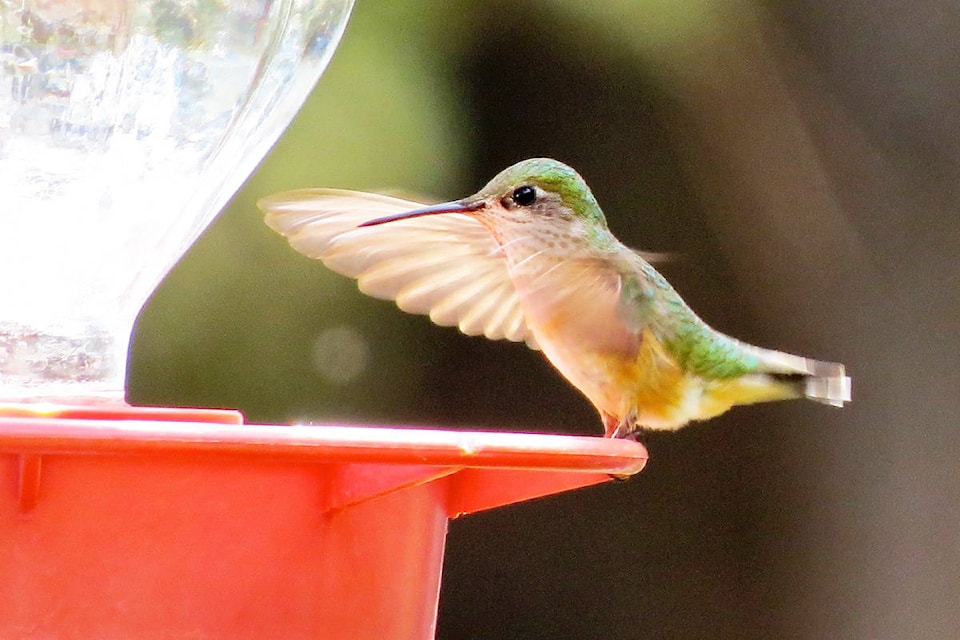I like surprises. How about a nice backyard feeder photo of our smallest avian visitor, a Rufous Hummingbird…in flight!
Such a sight on a Penticton Facebook page got me thinking about these little birds.
Hummers buzz about at high speed, usually only coming to rest when feeding, and prefer to hover rather than perch.
With 50 wing beats a second, photographing a hummer in flight is quite the challenge!
But just seeing a Rufous can make my day.
It’s a standout visitor in its conspicuous rusty red, a perfect example of all that make hummingbirds so unique. One of the smallest of the hummers they’re only eight centimetres in length.
On average, our hummingbird visitors are between that size and 12.5 cm, or five inches. In fact, hummers are so small their nests are about the size of a golf ball and their eggs are hazelnut proportions.
Only a few of the estimated 350 members of the hummingbird family spend time in the Okanagan. In addition to the Rufous, we’re most likely to see the Calliope.
It’s a lovely iridescent green with a male chin ruff that flashes brilliant magenta in the light. Keep eyes open too for the Black-chinned Hummingbird. It sports an identifying dark head and black chin ruff.
Near my rural home a few years ago, repeated flights by a female Calliope convinced me she was coming and going to a nest. Watching closely, I finally spotted a miniature, lichen covered, spider webbed construction…ah hah!
To avoid losing it in the tangle of branches I had to mark the ground so I could watch from the same position each day. Diligence rewarded!
I saw the hatchlings pop up above the nest edge, just little heads, mom plunging her beak into gapping throats.
In only a few weeks, they were beating their wings, ready to fledge. Then off foraging for themselves, darting for insects and probing for nectar with their long thin beaks. Imagine how these little birds migrate thousands of kilometers to visit us each spring and summer. We’ve become a necessary convenience, especially if we’re generous with our feeders and attractive flower plantings.
Alas, we often overlook their contribution.
Concerned about insects? These compact bug eaters snatch their body weight in insects every day. They help control pesky mosquitoes and decimate fruit flies, aphids, beetles, and even ants.
Concerned about plant pollination? To keep their little bodies energized they can knock back their weight, and more, in nectar every day too.
That’s another plus for us. While they happily forage among our native and garden flowers they are picking up and distributing pollen.
How can we return the favour? Clean our feeders regularly and keep syrup topped up.
Make our windows and glass balcony railings visible so these precious hummers won’t crash when moving at high speed.
Add simple designs to windows and outdoor glass panels with a silver felt pen or decal. That way you can protect, and enjoy these tiny feathered whirligigs.
Nature Wise is a column written by Dianne Bersea.
